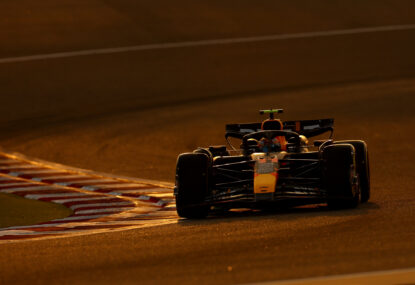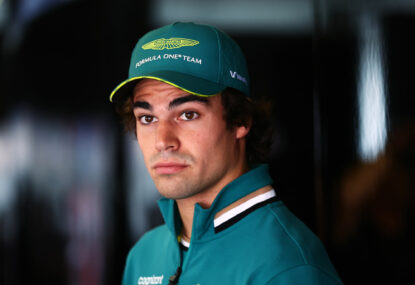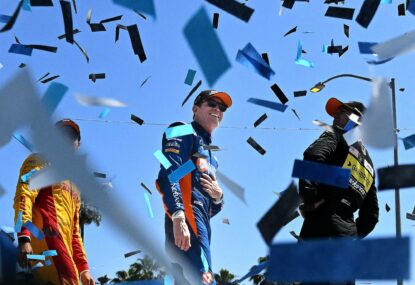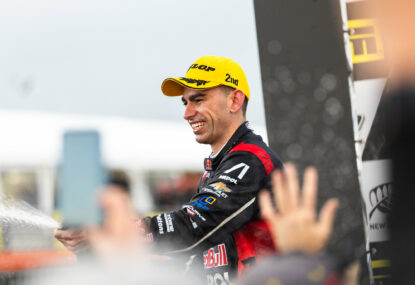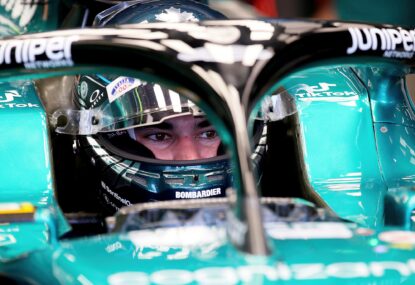Thursday first of May 2014 marks the twentieth anniversary of Ayrton Senna de Silva’s passing. Outside of Formula One circles, it’s often forgotten that fellow driver Roland Ratzenberger was the weekend’s first casualty.
Ratzenberger’s death during qualifying at San Marino that year broke the twelve-year drought the sport had enjoyed since Ricciardo Paletti’s luck ran out at the Canadian Grand Prix in 1982.
Senna and Ratzenberger were born within months of each other on opposite sides of the world and died within a horrific twenty-four hour period at the “Autodromo Enzo e Dino Ferrari”, now commonly known as Imola.
Senna’s legend was well established before his accident. Driving for Toleman, Lotus, Maclaren and Williams, he dominated the sport, winning three championships between 1988 and 1991. Racing held a special place in Ayrton’s heart, his commitment as unbreakable as his religious faith.
His victories were affirmations of his talent and determination. No stranger to controversy, he became well known for pushing his car into gaps that other drivers would cower from – a tactic that eventually paid dividends as rivals learnt to steer clear of his charges.
Once, Senna tracked down rookie Irishman Eddie Irvine in his pit garage and punched him in the face for having the audacity to unlap himself. Twice. Driving meant that much to Ayrton, and winning meant even more.
Senna was such a celebrated driver that heading into the 1994 season he had offers to drive with all four of F1’s leading teams. Details of an unprecedented $22 million contract with Ferrari, the outfit he considered the very soul of F1, have only recently come to light.
But in the end it was Williams that offered the speed, technical advantage and most importantly the prospect of another taste of championship glory.
Champion drivers throughout the decades will tell you that if a car is comfortable to drive it usually isn’t the fastest, and the ones that led the pack are often a real handful.
Senna expressed his frustration with the FW16, lamenting its sluggish handling compared the Williams cars of previous years. Prior to the 1994 season he ominously stated, “It’s going to be a season with lots accidents and I’ll risk saying we’ll be lucky if something really serious doesn’t happen.”
Fellow countryman Rubens Barrichello collided with a wall earlier in the San Marino weekend, leaving him with a broken nose, broken arm and unable to race. Senna was the first person he remembers seeing when he came to after his incident.
Similarly when Ratzenberger crashed, Senna commandeered an official track vehicle and headed to the medical centre, scaling a wall to get inside and cried unconsolably for his deceased opponent.
On what would prove to be the final morning of his life, Senna spoke to rival Alain Prost about re-establishing the disbanded Grand Prix Drivers’ Association with a view to improving the safety standards for all drivers.
He wouldn’t live to see the fruits of their efforts.
During the early stages of the Grand Prix, a safety was deployed while marshals tended to an on-track accident. As the race resumed, Senna’s car had good pace, but on lap seven it veered from the racing line and sped unabated into a concrete barrier making contact at 230kph.
A global audience held its breath as Senna was pulled from the car and treated on the side of the track by race medic Sid Watkins. A tracheotomy was performed after a weak heartbeat was detected and Senna was airlifted to nearby Maggiore Hospital.
He was pronounced dead shortly after.
It’s estimated that three million Brazilians flooded the streets during his state funeral in São Paulo. I’m surprised they didn’t raze the city to the ground.
To put that in perspective, it’s estimated that one million turned out for Princess Diana’s service, four million attended Pope John Paul II’s funeral and it’s claimed that five million people mourned Kim Jong-Il (or one fifth of the entire North-Korean population). You can BYO grain of salt to that claim I suppose.
Earlier this year I interviewed 1: Life on the Limit director Paul Crowder for the Australian release of his Formula One documentary. He spent years trawling through crash footage and inhabiting the tragedy of driver fatalities, and succinctly illustrated the protection that drivers in the current era enjoy.
“You watch the Webber crash from Spain a few years ago, and he’s just upset that he’s crashed. Your car was upside in the air and you went into a wall at 350mph and you’re upset that you’re out of the race.”
For myself, Senna’s passing forged the concepts of death and Formula One. Crowder however recalls the fatalities of Jonathan Price (1976) and Ronnie Peterson (1978) making the biggest impact on an impressionable schoolboy watching highlights on television while eating Sunday dinner.
Until the mid-seventies Formula One races weren’t televised in full throughout Europe, with coverage of fatal crashes earning as much air-time as the race results themselves.
As if to highlight how safe Formula One became, it took a freak skiing accident to leave Michael Schumacher in a coma (the damage of which is still being determined), while a nasty collision in the 1999 British GP left the champion with only a broken leg.
Although today’s drivers enjoy unparalleled precautions, the spectre of death lingers on the periphery.
We only have to cast our minds back to last year’s Canadian Grand Prix where a race marshal lost his life tending to an on-track incident. Marussia test driver Maria de Villota also passed away last year as a result of injuries sustained during a routine testing program.
Closer to home, Jaques Villeneuve walked away from a race incident during the 2001 Melbourne Grand Prix, while sadly a member of the race support staff wasn’t as lucky.
Far too many racers lost their lives in F1 cars to mention, but Senna had something rare, something intangible that amplified the tragedy. As we remember his life, we must celebrate where we are in the modern Formula One era, and remind ourselves to keep improving.
Ideally, as the Senna anniversary ages so too will Formula One’s blemished history continue to fade.
#KeepFightingMichael































































































